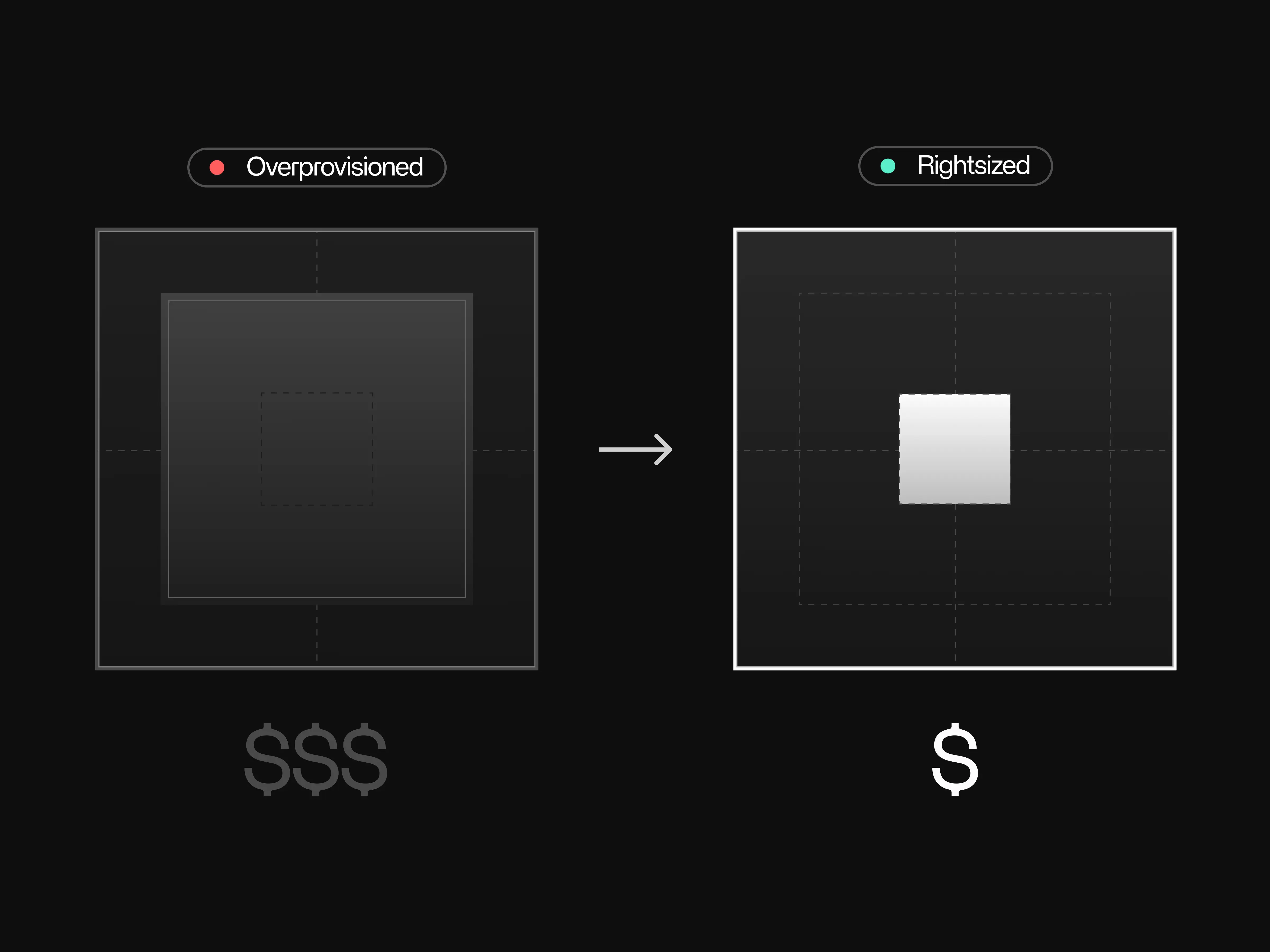
How We Used Our AI Right-sizing Tool To Save At Least 30.2% On Nextflow Workflows Costs
How AI-powered instance recommendations guide smarter reruns without changing pipelines
What we did
Cost reduction in EC2 spending on our own workflows
Potential savings when also optimizing regions
Automated recommendations
How We Used Our AI Right-sizing Tool To Cut Nextflow Workflow Costs By At Least 30.2%
In this case study
“Tracer's AI analyzed our Nextflow runs and recommended better instances for reruns, helping us reduce EC2 spending by 30.2%, with potential savings above 55% when optimizing across regions”
Implementation
Overview
We used our instance rightsizing technology to save 30.2% by applying the infrastructure changes suggestions of our AI agent after analyzing nextflow runs, without modifying the pipelines themselves
“This makes instance selection so much easier. I never have to think about what instance to use again, the AI just handles it automatically and saves us money every time” — Michele Verrielo, Principal Engineer at Tracer
Challenge
The problem is you never know how much CPU or RAM to allocate for a given Nextflow workflow.
Selecting the right EC2 instance is one of the hardest challenges in bioinformatics: if the instance is too small, the job fails and if it’s oversized, you burn money unnecessarily.
The challenge goes far beyond picking the cheapest option. Every decision — CPU, RAM, disk space, instance family (c5, m5, r5), and region — influences performance and total cost.
The biggest issue is that some containers and tools request far more resources than they actually need, leaving CPU and RAM unproductive for most of the run and driving up costs without benefit. Because it is hard to see what is really being used at each stage, teams often end up overspending without realizing this.
This turns instance selection into a complex resource allocation puzzle that wastes valuable researcher hours.
Internal Resolution
To address this problem of instance selection, we built our own AI that ingested 8 gigabytes of AWS machine pricing data and modeled the full range of EC2 instance options across families and regions. To validate these models, we launched hundreds of controlled pipeline experiments internally under real-world conditions.
This combination of large-scale pricing analysis and benchmarking provided the foundation for an AI agent that can recommend the most cost-effective instance by analyzing a pipeline run and suggesting a better instance for the next run of this pipeline. This happens at the infrastructure level, so users never need to rewrite or modify their pipelines.
Measurable Impact
The implementation of our AI agent had significant cost-cutting results for our team. By applying the suggested instance type when rerunning our nextflow workloads, we were able cut our EC2 spending by 30.2% without affecting performance. As the bulk of pipelines are run repeatedly, these savings accumulate quickly and are therefore highly relevant in real-world environments.
For teams that are able to take region flexibility into account, applying the same approach led to even greater savings. In our internal tests, costs dropped by more than 55%.
Takeaway
Tracer's AI agent simplifies the complex instance selection process by automatically analyzing CPU and RAM usage after each pipeline run and recommending the most cost-efficient infrastructure changes for the next run. This is especially valuable for pipelines that are executed multiple times, where costs compound over repeated runs.
This resulted in a 30.2% cost reduction in EC2 spending for our own team, with potential savings going above and beyond 55% when adding region to the equation.
With automated, data-driven recommendations, organizations can thus confidently match workloads to the right instance without rewriting pipelines, avoiding failures from undersized choices and excess spend from oversized ones.
cost reduction in EC2 spending achieved automatically
potential savings when optimizing across regions
eliminates guesswork in instance selection
failures from undersized choices and excess spend from oversized ones
With automated, data-driven recommendations, organizations can thus confidently match workloads to the right instance and avoid failures from undersized choices and excess spend from oversized ones.

